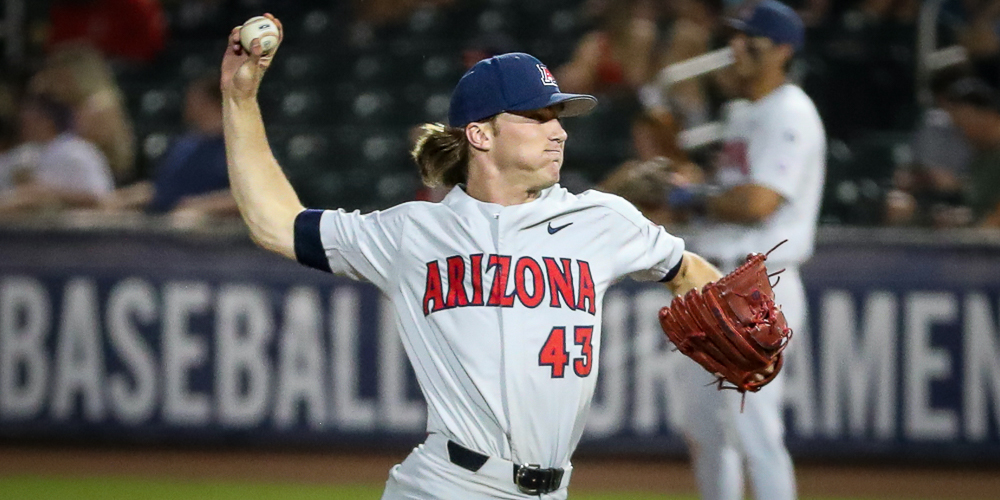
Etheridge: Holding our breath with the RPI • D1Baseball
Another swing of the hammer and we have another bracket. Do we have the best tool to build the field of 64? Mark weighs in along with other reactions from selection day
Holding our breath with the RPI
by Mark Etheridge, D1Baseball.com
When I was a boy, I worked with a man who had an old hammer. Most of the time, it worked fine. Then occasionally, the hammer's head would slip away on the backswing, and there'd be a projectile hurling airborne.
He would collect the tool, patch up any damage it caused, and repair the hammer. That hammer did its job, most of the time, anyway. But you never really knew when it wouldn’t. We all knew the hammer was faulty, but because of habit, thrift, or stubbornness, the man still used it along with his other tools.
The RPI is like that old hammer. For many situations, it works fine. Then there's that swing that gets away from you.
It's time for a new hammer.
Despite all the cries, this isn't a black-and-white issue. In some situations, the RPI works fine. The problems are at the cutlines, the last host or two, and the last few spots in the field. That's where the focus is, and that's when we lose our head.
Indiana State received a host with a number nine RPI. Congrats to the Sycamores on a great season at 42-15, especially after starting 2-8. But they went just 3-9 versus the teams in the field of 64. Indiana State was rewarded by a system that rewards games against teams with high winning percentages.
There were some swings that the hammer got right. The seed lines looked really solid. No mystery two-seeds that should have been a three or vice-versa. The host teams were all defensible picks, and the top eight was as well. In most cases, the RPI identified the best teams.
However, no conference benefited more from the RPI than the SEC.
Make no mistake; the SEC is the best baseball conference by any measure. There are better players, coaches, facilities and and large, supportive fanbases. The teams also win a lot of games, which the RPI formula embraces and the committee rewards.
Rewarding excellence isn't a problem. Sports are a meritocracy, after all. However, when SEC teams can stockpile top 50 wins, a key committee metric to see how teams will fair against regional caliber teams, it inflates the resume.
Instead of an arbitrary number like 50, why not measure it against the teams in evaluation for the field? that would include bubble teams like Arizona State (52), USC (53) and Kansas State (55) and exclude teams with no chance for inclusion, like Georgia (42), Louisville (43) and Missouri (50).
"I think there needs to be some groupthink, and some statistical experts to come in and help us kind of recreate this thing," said committee chair John Cohen. "Basketball has done a great job of changing their RPI to the NET and moving it in a different direction."
Cohen, the former head coach at Kentucky and Mississippi State, is now the Athletic Director at Auburn. He understands how the RPI works and how coaches are scheduling to build a strong RPI.
In the past, there was a stigma attached to scheduling to "game" the RPI. Now, if you don't schedule with the RPI in mind, you are at a disadvantage. Some teams who openly scheduled to influence the RPI, like Kentucky and Indiana State, were rewarded with host sites. This incentivizes a scheduling philosophy not to play the best teams but to play the best teams that will boost the metrics. Sometimes, the two are aligned. Not always.
by Mark Etheridge, D1Baseball.com
When I was a boy, I worked with a man who had an old hammer. Most of the time, it worked fine. Then occasionally, the hammer's head would slip away on the backswing, and there'd be a projectile hurling airborne.
He would collect the tool, patch up any damage it caused, and repair the hammer. That hammer did its job, most of the time, anyway. But you never really knew when it wouldn’t. We all knew the hammer was faulty, but because of habit, thrift, or stubbornness, the man still used it along with his other tools.
The RPI is like that old hammer. For many situations, it works fine. Then there's that swing that gets away from you.
It's time for a new hammer.
Despite all the cries, this isn't a black-and-white issue. In some situations, the RPI works fine. The problems are at the cutlines, the last host or two, and the last few spots in the field. That's where the focus is, and that's when we lose our head.
Indiana State received a host with a number nine RPI. Congrats to the Sycamores on a great season at 42-15, especially after starting 2-8. But they went just 3-9 versus the teams in the field of 64. Indiana State was rewarded by a system that rewards games against teams with high winning percentages.
There were some swings that the hammer got right. The seed lines looked really solid. No mystery two-seeds that should have been a three or vice-versa. The host teams were all defensible picks, and the top eight was as well. In most cases, the RPI identified the best teams.
However, no conference benefited more from the RPI than the SEC.
Make no mistake; the SEC is the best baseball conference by any measure. There are better players, coaches, facilities and and large, supportive fanbases. The teams also win a lot of games, which the RPI formula embraces and the committee rewards.
Rewarding excellence isn't a problem. Sports are a meritocracy, after all. However, when SEC teams can stockpile top 50 wins, a key committee metric to see how teams will fair against regional caliber teams, it inflates the resume.
Instead of an arbitrary number like 50, why not measure it against the teams in evaluation for the field? that would include bubble teams like Arizona State (52), USC (53) and Kansas State (55) and exclude teams with no chance for inclusion, like Georgia (42), Louisville (43) and Missouri (50).
"I think there needs to be some groupthink, and some statistical experts to come in and help us kind of recreate this thing," said committee chair John Cohen. "Basketball has done a great job of changing their RPI to the NET and moving it in a different direction."
Cohen, the former head coach at Kentucky and Mississippi State, is now the Athletic Director at Auburn. He understands how the RPI works and how coaches are scheduling to build a strong RPI.
In the past, there was a stigma attached to scheduling to "game" the RPI. Now, if you don't schedule with the RPI in mind, you are at a disadvantage. Some teams who openly scheduled to influence the RPI, like Kentucky and Indiana State, were rewarded with host sites. This incentivizes a scheduling philosophy not to play the best teams but to play the best teams that will boost the metrics. Sometimes, the two are aligned. Not always.



